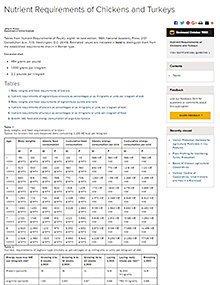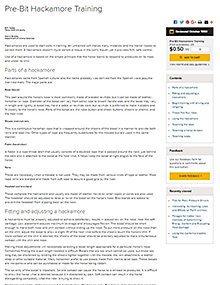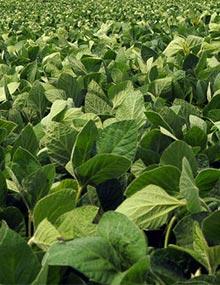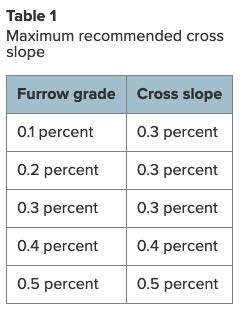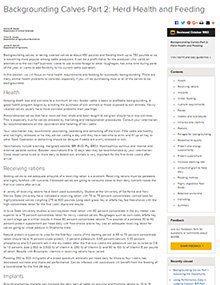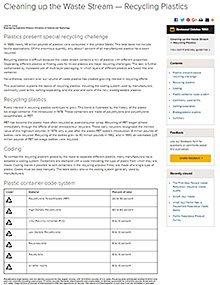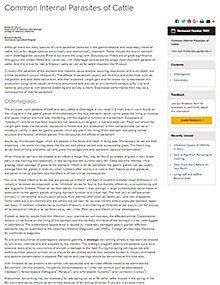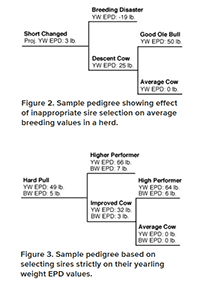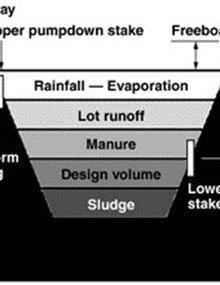
Birdsfoot Trefoil
Reviewed
Birdsfoot trefoil is a long-lived perennial legume ideally suited for many grass-legume pastures in Missouri. It grows and produces forage during July and August when most cool-season grasses are semi-dormant. Trefoil does not cause bloat, as do many other commonly used legumes.
Nutrient Requirements of Chickens and Turkeys
Reviewed
Tables from Nutrient Requirements of Poultry, eighth revised edition, 1984, National Academy Press, 2101 Constitution Ave., N.W. Washington, D.C. 20418. Estimated values are indicated in bold to distinguish them from the established requirements shown in Roman type.
Pre-Bit Hackamore Training
Reviewed
Hackamores are used to start colts in training. An untrained colt makes many mistakes, and the trainer needs to correct them. A hackamore doesn't injure sensitive tissue in the colt's mouth, yet it provides firm, safe control.
Soybean Production in Missouri
Reviewed
Soybeans were the most successful crop for Missouri farmers in the 1970s & 1980s. Visit our site to learn more about Soybean Production in Missouri.
Reed Canarygrass, Ryegrass, and Garrison Creeping Foxtail
Reviewed
Reed canarygrassReed canarygrass is a tall-growing, cool season perennial with a rhizomatous root system (it roots by sending out runners).
Irrigating Soybeans
Reviewed
Editor’s note
The PDF version of this publication includes illustrations.
Land Grading for Irrigation: Design and Construction
Reviewed
Land grading is used for irrigation and subsequent drainage. Visit our site for our Land Grading for Irrigation: Design and Construction guide.
Flock Profiling for Monitoring Turkey Production
Reviewed
Editor’s note
The PDF version of this publication includes illustrations.
Community Pleasure Trail Riding
Reviewed
Trail riding is fast becoming a major part of the pleasure horse industry. More and more people are spending their leisure time saddling a quiet, sensible horse and enjoying its companionship in scenic surroundings.
Backgrounding Calves Part 2: Herd Health and Feeding
Reviewed
A good health program is critical to successful calf backgrounding. Visit our website today to learn more about backgrounding calves.
Cotton Insects and Mites
Reviewed
Editor's note
Dehumidifiers
Reviewed
Dehumidifiers reduce the moisture in the air. They provide comfort for people and reduce or eliminate deterioration of equipment due to rust, rot, mold and mildew.
Sheep Pregnancy Checking by Ultrasonic Sound
Reviewed
Ultrasonic sound waves can be used to determine sheep pregnancy without harming the ewe or fetus. Learn how the procedure works and pregnancy is diagnosed in this University of Missouri Extension guide.
Selecting and Working With a Farm Building Contractor
Reviewed
Two major tasks are involved in the successful completion of a new farm building — choosing the right building and selecting a good contractor to build it.
Most buildings constructed today are "pre-engineered," or package-type, buildings.
Missouri Soil Surveys
Reviewed
Common Internal Parasites of Cattle
Reviewed
Understanding and Using Sire Summaries: BIF Fact Sheet
Reviewed
Sire selection is one of the most important decisions cow/calf producers make. If it is effective, sire selection will account for nearly 90 percent of the genetic improvement in a herd.

Radon: An Indoor Health Hazard?
Reviewed
Indoor air can be polluted in a number of ways. Indoor pollutants include formaldehyde, carbon monoxide, respirable dust, nitrogen dioxide, radon and other gases. This guide focuses on just one of these pollutants — radon.
Home Slaughtering and Processing of Beef
Reviewed
A beef animal selected for slaughter should be healthy and in thrifty condition. Visit our site to learn about home slaughtering and processing of beef.
Forages for Cattle: New Methods of Determining Energy Content and Evaluating Heat Damage
Reviewed
Improved system of forage analysisThe crude fiber method of feed analysis has been used for more than 100 years. Although this method was an important first attempt at determining the energy content of feeds, it has a number of shortcomings.
Kitchen Planning: Work Centers
Reviewed
Lelland L. GallupDepartment of Environmental Design
What is meant by work centers or work areas? These are places within the complete kitchen plan where you can readily do a particular task because you have arranged together the necessary:
Safe Use, Storage and Disposal of Paint
Reviewed
Paint is a product that most of us have that can become a hazardous waste. Visit our site for our resource on the Safe Use, Storage and Disposal of Paint.
Qualitative Nitrate Detection for Toxicity Potential
Reviewed
George B. Garner
Department of Biochemistry
This test is designed for survey use and for advising clients of the need for quantitative nitrate analysis when the level of nitrate detected could possibly cause nitrate/nitrite poisoning. The test can be used on water supplies, hay, silage, fodder, pasture samples and mixed ground feeds.
